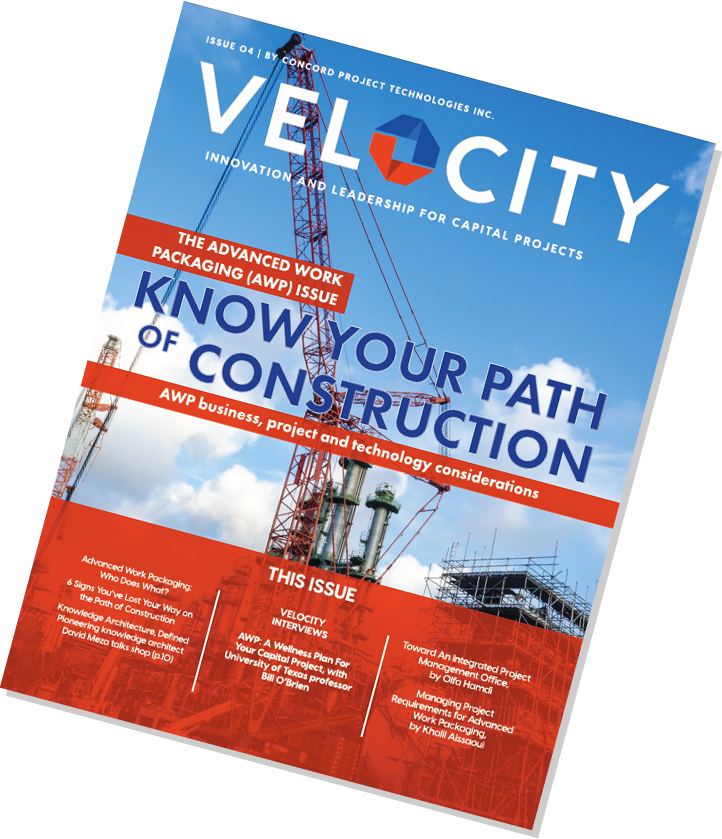Like all of the most powerful leadership approaches, Predictability Thinking™️ starts at the top. Olfa Hamdi explains why.
Capital project outcomes are affected by a constellation of factors, and chief among them is whether the leadership adopts a predictability mindset.
We’ve all worked on a project undermined by an ineffective contracting strategy, inadequate stakeholder negotiations or a general lack of clarity around cost and schedule tradeoffs. We’ve all known leaders who skimp on risk assessment and then get caught off guard by foreseeable problems. Sometimes, all it takes to sabotage predictable project execution is a leader who is too quick to pull the trigger.
All of these are failures of Predictability Thinking™, and they can be remedied by adopting a predictability mindset. Here at Concord®, we tell clients that unless the project executive is on board with Predictability Thinking™, the prospects for transformative change are dim.
The magic recipe for predictable project delivery includes a project sponsor who champions Predictability Thinking.
Olfa Hamdi Tweet
This is not another job for your project manager
Like all of the most powerful leadership approaches, Predictability Thinking™ starts at the top. A predictability mindset must be adopted by executives first, and managers second. Who qualifies as a project executive? Formal titles vary, but generally we’re talking about people in or above the project sponsor, joint-venture director and venture manager roles.
In other words, Predictability Thinking™ begins with the people at the center of the business opportunity, the people who will be held accountable when the results — financial and otherwise — come in.
Ideally, the people in these roles are seasoned capital project executives with a robust understanding of every aspect of project development. Often, however, they’re senior executives with little appreciable background in capital projects. Tell me which kind of person you have in your project sponsor role, and I’ll tell you how predictable your project will be.
Part of the problem is that there is no obvious career path to becoming a project sponsor, and there are no best practices for cultivating project sponsors in an organization. Some forward-thinking companies have established their own protocols for grooming future project sponsors, immersing them in a culture of Predictability Thinking™, emphasizing a risk-management approach, and helping them to establish a solid understanding of capital project delivery systems by rotating them through key departments. Many, however, do not — and that’s where the problems begin.
A magic recipe for predictable projects
The magic recipe for predictable project delivery includes a project sponsor who understands and champions Predictability Thinking™ at all levels. Sponsors can achieve this through their backgrounds, by collecting experience in all aspects of capital project delivery, or they can achieve it by making a conscious effort to study and understand all of the forces that impact predictable project delivery. That’s why Concord® offers the Predictability + AWP executive training.
Cheat Sheet: How Do I Adopt A Predictability Mindset?
A blog post isn’t long enough to explain all the ways in which a predictability mindset will impact your operations, but here are four elements that almost all predictability-minded leaders will employ.
1 | Staffing
Staffing is directly correlated with overall project success, and project leaders who have adopted Predictability Thinking™ always hire with predictability in mind. They also have a solid appreciation of the correlation between staffing and their capital project outcomes.
2 | Leadership
Executives, including project sponsors, must work to understand the leadership style of the managers who work with them and consider what it will take to mitigate weaknesses and gaps to improve predictable outcomes.
3 | Project Execution Planning
Sponsors with a predictability mindset appreciate the power of a good Path of Construction and have a clear understanding of how it correlates with key objectives like cost and schedule. While they do not lead the development of the Project Execution Plan (PEP) or the Path of Construction (POC), they are always involved in decisions requiring major trade-offs.
3 | Culture
The sponsor must understand the working culture between her teams, contractors, site and geographical location where the project is, and she must have the tools required to understand how that culture impacts predictable results.
Fundamentally, Predictability Thinking™ offers executives both the framework and the tools required to identify, understand and evaluate the known unknowns that impact project predictability. Don’t let anyone tell you that you can achieve a predictability mindset with new software or a revamped org chart. A predictability mindset is about awareness, which requires just two simple things: education and experience.
If you’re ready to hone your Predictability Thinking™ skills and adopt a predictability mindset, click here to register for our Predictability + AWP executive training in Houston, TX on Dec. 6, or click to contact us today.





